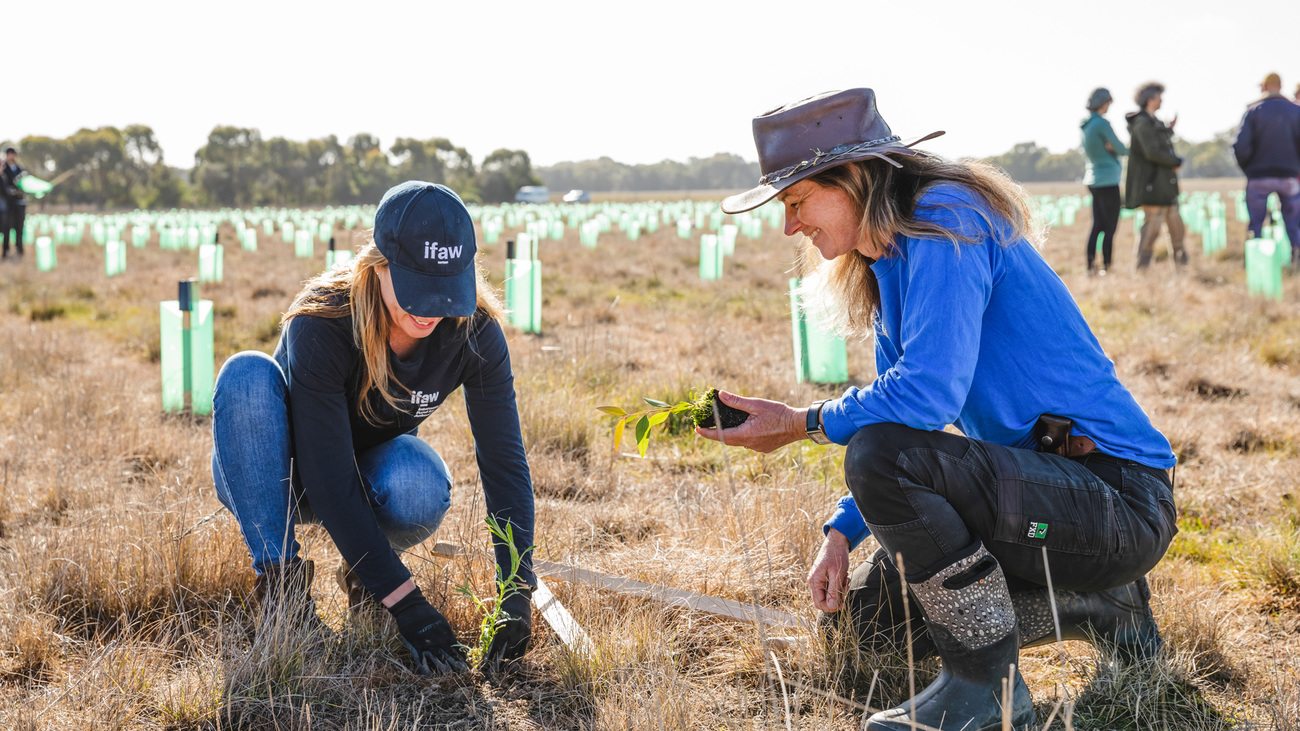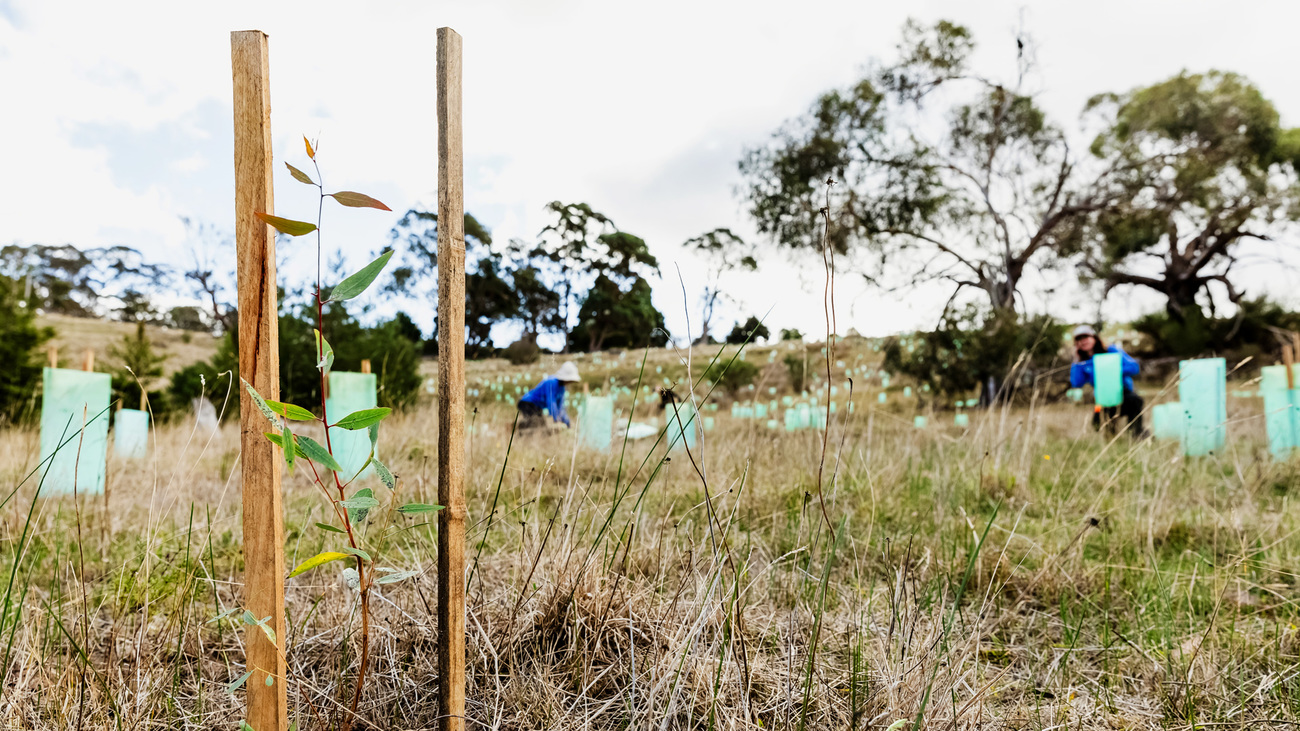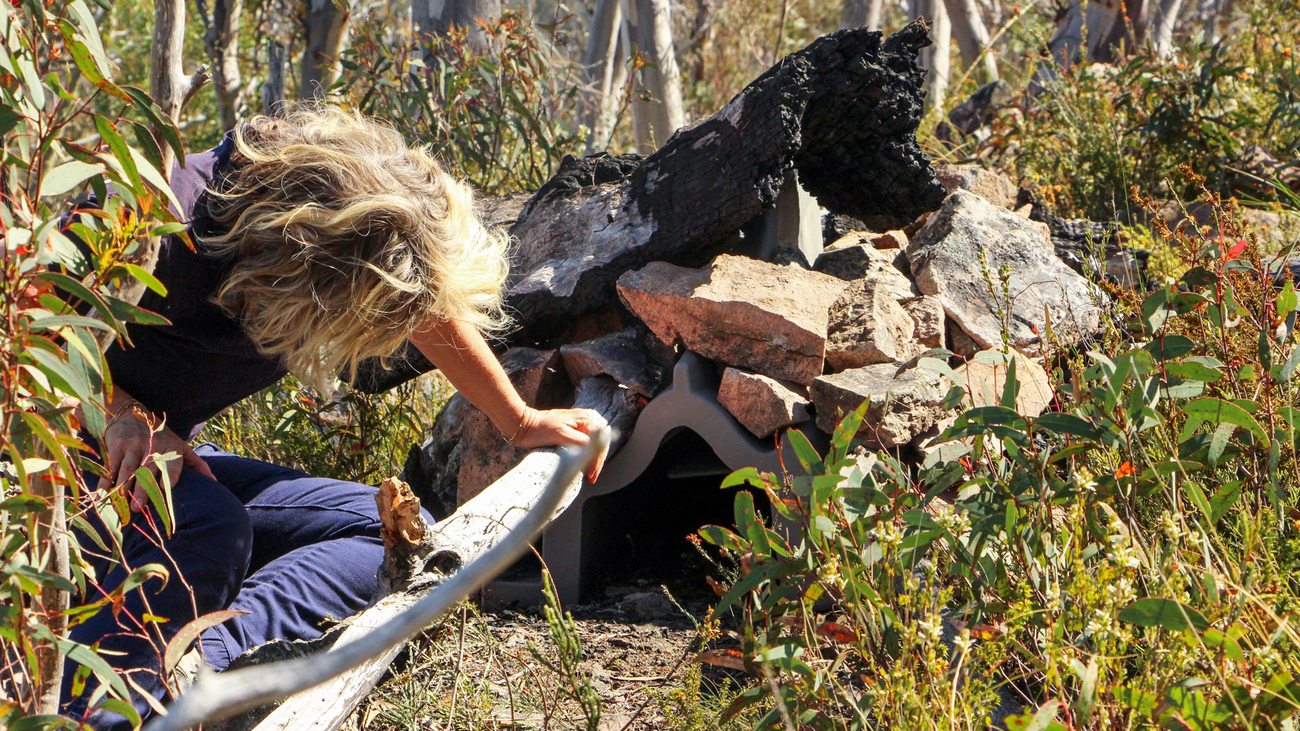Community connectivity and climate resilience - Australia
Building community connectivity and climate resilience in AustraliaA holistic approach to disaster response: Recovering and reconstructing habitats after Australia’s Black Summer
A holistic approach to disaster response: Recovering and reconstructing habitats after Australia’s Black Summer
Five years ago, the devastating aftermath of the Black Summer fires in Australia confirmed the ongoing necessity of our holistic approach to conservation: one that goes beyond rescue and rehabilitation to include habitat restoration, empowering communities to continue to care for their flora and fauna, and connecting everyone involved to ensure effective use of resources.

Ongoing monitoring and research of wildlife and their habitats, and engaging communities in that work, is an effective way to increase both people’s and animals’ resilience to the effects of climate change.
Climate change can seem like a distant, large-scale issue to be dealt with at national and global levels, but its impacts are very real and immediate, particularly for local communities. The Black Summer fires were a stark example of this—devastating homes, disrupting lives, and wreaking havoc on local ecosystems.
So, it is critical these communities are given the opportunities, tools, and resources needed to foster a sense of stewardship for their neighbouring ecosystems as a way to build resilience against future disasters. Local actions make a big difference. With this stewardship in mind, communities can work on improving emergency preparedness, supporting recovery and management of the landscape, and advocating for policies that help them mitigate and adapt to climate change.
The importance of an integrated approach
Conservation at its best is an interconnected cycle that ensures we aren’t just saving individual animals but also doing our best to give them a sustainable future.
Over the past five years, IFAW has worked alongside 31 of our dedicated partners, across 21 impacted communities, planting over 100,000 trees, creating more than 60 hectares of habitat, and supporting several in-depth research projects into how flora and fauna recover from fire.
Through strong relationships with on-the-ground groups and networks such as Great Eastern Ranges (GER), Koala Clancy, and Bangalow Koalas, we helped support numerous community planting days, engaging thousands of volunteers in the process.

Our work with GER is an excellent example of how we collaborate to create positive change. We had partnered with them before the fires to enhance networks of local governments, private landowners, and the wider community to reconnect the landscape and create biodiverse corridors—called Koala Climate Corridors—that provide wildlife shelter and space to move as conditions and food sources shift.
In 2024 the first phase of these Koala Climate Corridors—the Bunyas to Borders project in the Lockyer region of SE Queensland—was completed with help from Lockyer Uplands Catchment Inc. Local landholders helped plant over 3,500 trees and installed dozens of nest boxes and wildlife water drinkers across 53 properties to establish a corridor to benefit koalas and eight other priority species. Phase 2 is now underway to build on the foundation of work started during the first phase, to extend the corridor and deepen the impact.
Building community capacity through events such as Koala Fest, workshops and seminars to train landowners in species identification and how to maintain appropriate habitat, and assisting with fire, weed, waterways, and land management are all key aspects of community engagement where we work.
Innovative approaches to conservation
IFAW has also been at the forefront of supporting innovative conservation techniques during post-fire recovery efforts. By incorporating heat seeking drones and specially-trained dogs to track and study koalas, we provided opportunities to quickly rescue koalas in the burnt landscape, while enhancing researchers’ ability to monitor the health and resilience of koala populations after the fires.
We have also supported the implementation of clever habitat solutions, providing supplementary habitat for species while the landscape heals. For example, at Two Thumbs Wildlife Sanctuary in southern New South Wales, which was destroyed when a fire engulfed the property on January 23, 2020, following the initial koala search and rescue efforts with Bear, we turned our efforts to helping the sanctuary recover from the ground up. We installed 125 nest boxes specifically designed to mimic natural tree hollows and appeal to a range of animals including gliders, possums, and a variety of birds.

We also helped with the installation of 20 world-first marsupial dens on the property. Camera traps subsequently caught 29 species checking out the dens. These activities were complemented by the carving of 20 hollows existing trees, the construction of five raptor platforms, and the planting of 2,000 native grasses and trees. Five years later, the sanctuary is coming back to life and fully on the road to recovery.
The full circle
Ensuring the long-term health and protection of our ecosystems is crucial in the fight against climate change. While we all hope to never experience another Black Summer, IFAW remains committed to implementing a comprehensive, local-level approach to tackle the broader environmental challenges that pose constant threats.
By addressing every aspect of the cycle, we can create a world where animals and people thrive together.
Related content
Our work can’t get done without you. Please give what you can to help animals thrive.